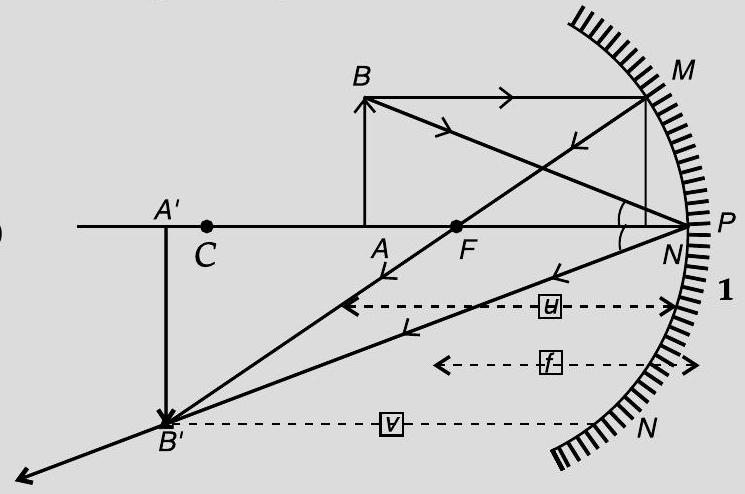ray-optics-and-optical-instruments Question 14
Question: Q. 5. Show that the spherical mirror formula holds equally to a plane mirror.
Show Answer
Solution:
Ans. Using mirror formula
For plane mirror
Hence
So,
It means the image sat equal distance and in opposite side of object. This is the true condition in image formation through plane mirror. Hence spherical mirror formula holds equally to a plane mirror.
Long Answer Type Questions
AI Q. 1.(i) Draw a ray diagram to show image formation when the concave mirror produces a real, inverted and magnified image of the object.
(ii) Obtain the mirror formula and write the expression for the linear magnification.
(iii) Explain two advantages of a reflecting telescope over a refracting telescope.
A [Delhi& O.D. 2018]
Ans. (i) Ray diagram to show the required image formation
(ii) Derivation of mirror formula Expression for linear magnification
iii) Two advantages of a reflecting telescope over a refracting telescope
(i)

(ii) In the above figure
Similarly,
Using equation (i) and (iii)
For the given figure, as per the sign convention,
Dividing each term by
Linear magnification
(iii) Advantages of reflecting telescope over refracting telescope
(i) Mechanical support is easier
(ii) Magnifying power is large
(iii) Resolving power is large
(iv) Spherical aberration is reduced
(v) Free from chromatic aberration
(any two)
[CBSE Marking Scheme 2018]






